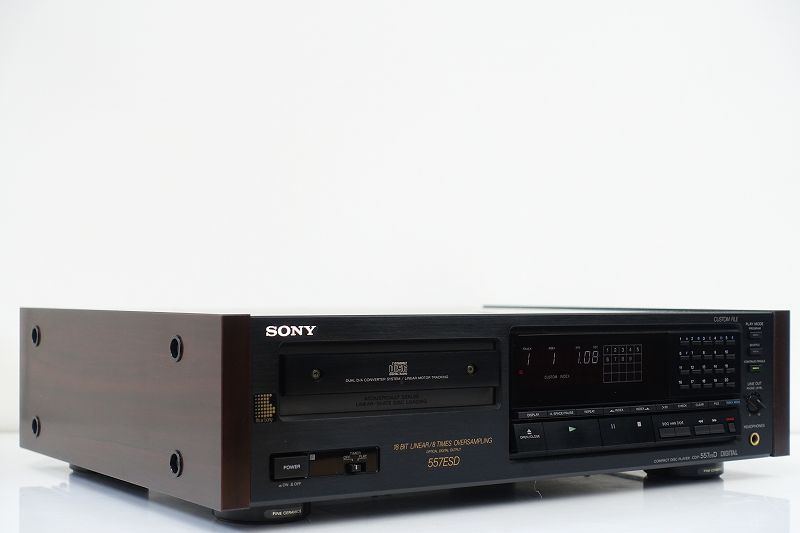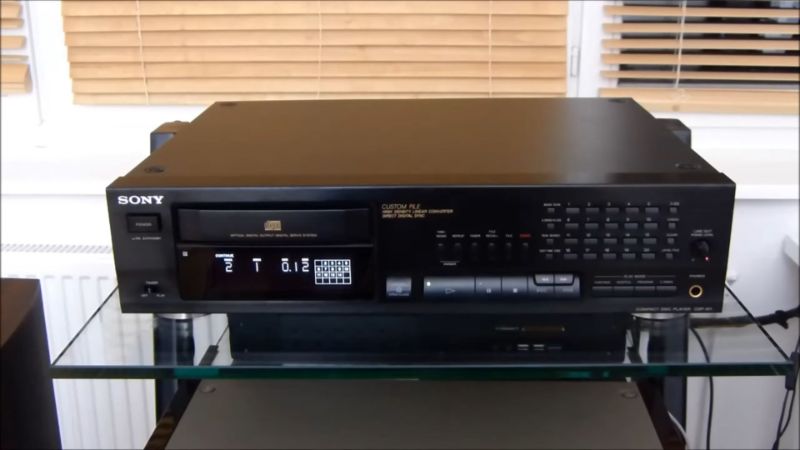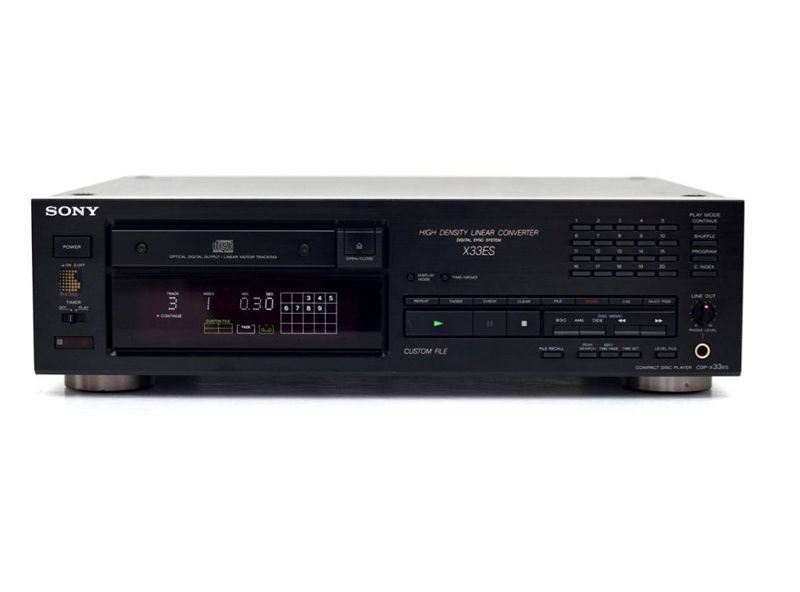A top Marantz engineer once told me, “The original Bitstream players sounded horrible.” You understand that this is strictly not for publishing, yet it is refreshingly open all the less. Others used more diplomatic terminology at the time, but it’s worth noting that the company didn’t release a flagship Bitstream system until 1994’s CD-15. This is six years – three generations – after the introduction of the aforementioned Philips devices. By the early 1990s, Marantz was making several extremely listenable affordable one-bit players (CD52SE, etc. ), but didn’t think it was good enough for high end until later…
Let us not forget that Bitstream was a fantastic solution to the problem of producing inexpensive digital-to-analogue converter chips with higher linearity than the ladder DACs of the 1980s – such as Philips’ renowned TDA1541. This was a four-times oversampling, sixteen-bit design that was universally praised for its lively, musical sound. The disadvantage was that it was noisy, and when handled incorrectly, it could sound harsh or opaque. It was also more expensive to build than running a single bit register at a fast speed – and when you’re producing billions of them, every penny counts.
Marantz’s CD-15 was an excellent piece of equipment, far superior to Philips’ early Bitstream designs in terms of sound quality. It sold over 500 units a year and utilized a lot of Philips parts, notably the CDM4 Pro transport mechanism and SAA7350/TDA1547 DACs. It cost £3,000 in the UK and was refined by Ken Ishiwata. It’s a lovely piece of kit that still looks modern twenty-three years later, and it established the aesthetic for future high-end Marantz machines, which haven’t deviated too much cosmetically since. So, when it came time to make a new top-end silver disc spinner four years later, you’d expect just minor alterations. Instead, the corporation has effectively decided to trash Bitstream and start from scratch!
With the CD-15’s replacement, Marantz returned to the pre-Bitstream period. It came as a surprise to many of us, given that we are constantly reminded that new technology is superior to old. The CD-7 of 1998 was a veiled admission that advancement isn’t always a positive thing. Despite being a work of art that measured up to the standards of the day, the CD-15 predecessor didn’t appeal to many people. It was deemed to sound a little too ‘hi-fi,’ and to lack the organic musical flow of previous 16-bit, four-times oversampling machines. Knowing that Philips was about to discontinue creating the TDA1541 DAC chips, and that they had already earned legendary status during their own lives, Marantz dutifully purchased the final batch and designed the CD-7 around them…
When this £3,500 CD spinner was released, it stunned the globe by using an older digital converter than the device it replaced. Inside was the TDA1541’s best Double Gold Crown variant, which was running in differential pairs for maximum linearity. A new customized Linear Music Filter was used in conjunction with these, consisting of two Motorola 56000 processors running the source code of Philips’ SAA7220 digital filter chips, as well as special Marantz code. Although the player didn’t use SAA7220s (which were used in conjunction with Philips’ original TDA1541-based players), its DSP chip emulated them to recreate four times oversampling and three switchable filtering algorithms, including a special option that vastly improved on the stock filter profiles. The concept was to provide the best versions of old DAC chips with cutting-edge filtering.
The lack of a top-flight off-the-shelf transport was a concern for Marantz at the time. You may argue that it was the beginning of the end for CD, as Philips began to scale back and reduce the price. Unfortunately, the excellent CDM4 Pro was no longer available, so Marantz had to make do with the (then) ubiquitous CD12.3. The metal chassis version was requested, and Marantz rebuilt it to their specifications, adding diamond cut stainless steel slide bars for very smooth disc loading. The CD-7, like its predecessor, included a number of carefully chosen Marantz Hyper Dynamic Amplifier Modules (HDAMs), as well as Shottky diodes, discrete transistor regulation, and an ultra low noise ring-core toroidal transformer in the power supply. The copper-plated diecast chassis and casing were fitted with anti-resonance fixings and vibration damping feet, and audio-grade selected components were plentiful.
Noise is generated during the digital-to-analogue conversion process, which must be filtered out of the audio band. Filtering, on the other hand, has its own set of issues that have an impact on the sound in various ways – the time domain can be and is affected. Filters introduce pre- and post-ringing, which essentially blurs an impulse so that it doesn’t start and stop cleanly, but instead has artefacts before and after the event, smearing the sound in the time domain. Marantz chose to face this front on with its own custom-designed Linear Music Filter for the CD-7, which used smart digital signal processing before the digital conversion stage. This had a more mild effect, providing a flat frequency response and minimal phase distortion. It was a refinement of the basic ‘FIR’ digital filter, which greatly reduced pre-ringing. In addition, after the digital-to-analogue conversion, a gentle-acting third-order Bessel analogue filter provided optimal impulse response and reduced phase distortion. Other features included ‘soft mute’ to prevent signal noise clicks when using the stop and pause buttons, -12dB track search attention, and automated de-emphasis switching on Marantz’s DSP.
In other ways, the CD-7 was standard – at least for a flagship Marantz silver disc spinner. It included balanced XLR outputs in addition to the standard RCA phonos, as well as optical or coaxial digital outputs. The digital input was another standout feature of this computer, in addition to the antique DAC chips. It was a foresight move, as the computer could now function as an independent DAC with a resolution of up to 20 bits and 48 kHz. Finally, there were all of the standard play and repeat modes found on every other CD player, as well as Marantz’s annoyingly bright fluorescent display, which could be turned off. Needless to say, the build and finish of this Japanese-made equipment were outstanding.
First and foremost, a word about the CD-15. You could argue it sounds ‘of its time’ – a decade ago, CD players lacked fine detail and focus, and the ’15 was released at a time when the goal was to completely move on from that. So it appears that the first Bitstream Marantz flagship is all about demonstrating its hi-fi capabilities. It features a low-distortion sound that is exceptionally clear, open, and explicit by today’s standards. It’s also muscular, prompting some to describe it as “very American” at the time. What it doesn’t do is sound particularly European; the beautifully flowing, organic feel that Philips-based machines have always had is missing. It’s easy to see why some Marantz aficionados wanted for a more familiar experience.
The CD-15 was a fantastic CD player, released at a time when the CD was finally establishing itself as a mature and reliable music medium. It was vastly superior to what had come before in almost every way, but it failed to excite the emotions or fulfil the soul in some way. In this light, the somewhat strange choice to exhume those old Philips multi-bit DAC chips in order to replace them makes sense. In a lot of respects, the CD-7 sounds eerily similar to the CD-15, yet it’s also very distinct. It produces a considerably more musical sound — things aren’t as flat and uninteresting, and the recording is far more dynamic and alive as a result. Listening to the CD-7 after listening to the CD-15, it’s evident that Marantz engineers succeeded in achieving their stated goal of creating a memorable and unique silver disc spinner.
It does, in fact, have a fantastic zeal for making music. It’s rapid and full-throttle, resulting in a highly animated sound that’s pure pleasure to listen to. The bass is expressive, flowing, and tuneful, while the treble yearns to be more than a decorative element. The CD-7’s midband is strongly percussive, grabbing the music’s phrase by the scruff of the neck. There’s no sense in which the listener is ever left to their own devices; Every time you press the play button, this machine takes you on a musical journey. Most machines of the era sound sonically lost and aimless in comparison. One important aspect of this is the CD-7’s dynamic performance; it appears to be particularly adept at sensing variations in music intensity as well as recreating musical transients.
This classic Marantz isn’t quite as sweet and toasty on the inside as you might expect. We were well past the days of the early Philips-based machines, and the result is a neutral product with only a smidgeon of sweetness. It doesn’t have the ‘bright white’ sound of other competing Japanese machines from the time, but it’s also not the digital equivalent of an old tube amp! If you’re looking for a journey down memory lane, skip the CD-7; instead, it’s a fascinating mix of old and new that creates its own distinct sound.
The fact that Marantz only produced 750 CD-7s is one of the key reasons for their high value. Expect to pay between £1,500 and £2,000 for a mint specimen these days, and don’t expect to find one at your next audio jumble — they’re rare and must be sought out. However, if you find a decent one, you’ll have a truly unique silver disc spinner that plays good old fashioned sixteen bit digital audio better than practically everything – and is a true modern classic. Nothing has ever been like it before or since.






